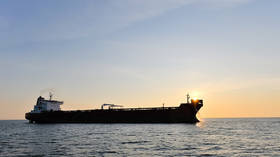OPEC’s shrinking capacity could send oil above $100

As the OPEC+ group unwinds its production cuts, the oil market has realized that not only do many producers in the pact lack the capacity to boost output further, but those who can pump more are reducing the global spare production capacity, thus exposing market balances to unexpected supply disruptions, and oil prices to further spikes. Most of the world’s global spare capacity is currently held by OPEC’s Middle Eastern members Saudi Arabia and the United Arab Emirates (UAE). Those two producers have the potential to raise their output as OPEC+ continues to unwind the cuts, but they are doing so at the expense of declining spare capacity.
Low spare production capacity could set the stage for a prolonged oil price rally because the world would have a lower buffer to offset sudden supply disruptions, which are always lurking in the global oil market.
The unrest in Kazakhstan and the blockade in Libya in the past month highlighted the challenge that the oil market will be facing if spare capacity continues to shrink. And shrink it will—that is, if OPEC+ continues to add 400,000 barrels per day (bpd) to its production quota every month until it unwinds all the cuts.
Higher OPEC+ Production Means Lower Spare Capacity
The problem with OPEC+ is that only a handful of producers can keep some capacity in reserve while raising production. The few who can include OPEC’s top producer and the world’s largest oil exporter, Saudi Arabia, the UAE, and to some extent, Kuwait and possibly Iraq. Iran, under US sanctions, has over 1 million bpd that could return to the market. But Iran will be able to tap that capacity only if the ongoing nuclear talks are successful—a development that many analysts doubt will occur anytime soon.
With Iran currently out of the equation, it’s mostly up to the Arab Gulf states to produce more oil and at the same time have some spare capacity left. The other issue is that the nameplate spare capacity may not be equal to the producers’ ability to pump oil—the limit of spare capacity has never been tested, even in Saudi Arabia.
Sure, the United States, Canada, and Brazil—all of which are outside OPEC+ pacts—are expected to raise their oil production this year as high prices and growing demand incentivize more activity and drilling. In the US shale patch, however, capital discipline continues to be a key theme, so annual production increases are not expected to be anywhere near the 2018-2019 surge in output.
With demand expected to exceed pre-Covid levels this year, the low spare capacity and the low upstream investment in recent years are setting the stage for even higher oil prices.
OPEC+ will see its spare capacity reduced to just 2.3 million bpd by July 2022, at the height of the driving season, according to Bloomberg estimates. This would be the lowest spare capacity since the end of 2018. Most of it will be held by the Arab Gulf producers—the only ones thought to be able to pump to their OPEC+ quotas throughout this year.
Even Russia is struggling. Russia has seen setbacks recently in its attempt to pump to its quota, and will likely continue to lag in the coming months, analysts tell Bloomberg. Russia may be able to raise its output by 60,000 bpd each month in the first half of 2022—just over half of the monthly production growth of 100,000 bpd it is entitled to, according to analysts polled by Bloomberg.
Triple-Digit Oil
Russian supply will level off in the next two months, Francisco Blanch, head of global commodities at Bank of America, told Bloomberg last week, saying that triple-digit oil “is in the works” for the second quarter this year.
Demand is recovering meaningfully, while OPEC+ supply will start leveling off within the next two months, Blanch said, noting that it will be only Saudi Arabia and the UAE that can produce incremental barrels to add to the market.
Moreover, OPEC+ has been undershooting its collective production targets for months and will likely continue to do so in the months ahead.
Even OPEC officials admit that the OPEC+ group will struggle to increase supply as much as the nameplate monthly increase allows, and prices could spike to $100 a barrel, some officials from OPEC producers have recently told Reuters.
Apart from Bank of America, other major Wall Street banks also predict that declining spare capacity and the inability of OPEC+ producers—except for just a few—to boost production will lead to triple-digit oil prices.
Oil prices could hit $100 this year and rise to $105 per barrel in 2023 on the back of a “surprisingly large deficit” due to the milder and potentially briefer impact of Omicron on oil demand, Goldman Sachs said last week. Due to gas-to-oil substitution, supply disappointments, and stronger-than-expected demand in Q4 2021, OECD inventories are set to dip by the summer to their lowest levels since 2000, Goldman’s analysts note. Moreover, OPEC+ spare capacity is also set to decline to historically low levels of around 1.2 million bpd.
“At $85/bbl, the market would remain at such critical levels, insufficient buffers relative to demand and supply volatilities, through 2023,” Goldman Sachs said in a note.
JP Morgan, for its part, expects the falling spare capacity at OPEC+ to increase the risk premium in prices, and sees oil hitting $125 a barrel this year and $150 a barrel next year.
“We see growing market recognition of global underinvestment in supply,” the bank said in a note carried by Reuters.
For more stories on economy & finance visit RT's business section















